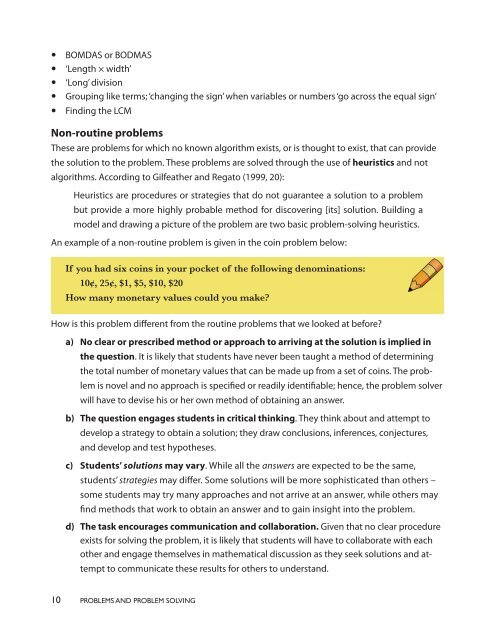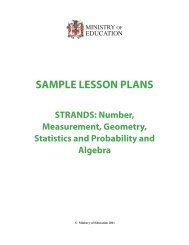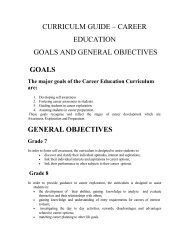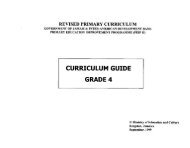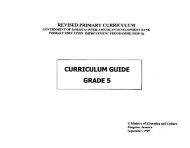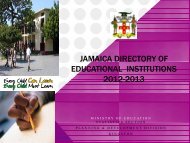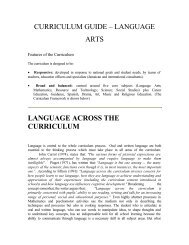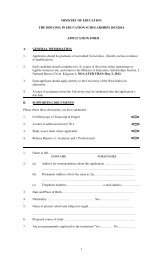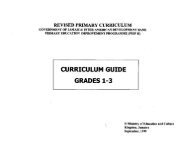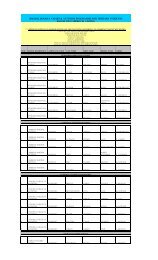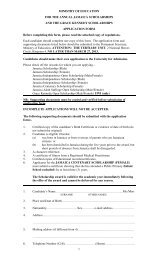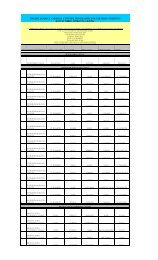Problems and Problem Solving - Ministry of Education
Problems and Problem Solving - Ministry of Education
Problems and Problem Solving - Ministry of Education
Create successful ePaper yourself
Turn your PDF publications into a flip-book with our unique Google optimized e-Paper software.
• BOMDAS or BODMAS<br />
• ‘Length × width’<br />
• ‘Long’ division<br />
• Grouping like terms; ‘changing the sign’ when variables or numbers ‘go across the equal sign’<br />
• Finding the LCM<br />
non-routine problems<br />
These are problems for which no known algorithm exists, or is thought to exist, that can provide<br />
the solution to the problem. These problems are solved through the use <strong>of</strong> heuristics <strong>and</strong> not<br />
algorithms. According to Gilfeather <strong>and</strong> Regato (1999, 20):<br />
Heuristics are procedures or strategies that do not guarantee a solution to a problem<br />
but provide a more highly probable method for discovering [its] solution. Building a<br />
model <strong>and</strong> drawing a picture <strong>of</strong> the problem are two basic problem-solving heuristics.<br />
An example <strong>of</strong> a non-routine problem is given in the coin problem below:<br />
If you had six coins in your pocket <strong>of</strong> the following denominations:<br />
10¢, 25¢, $1, $5, $10, $20<br />
How many monetary values could you make?<br />
How is this problem different from the routine problems that we looked at before?<br />
a)<br />
no clear or prescribed method or approach to arriving at the solution is implied in<br />
the question. It is likely that students have never been taught a method <strong>of</strong> determining<br />
the total number <strong>of</strong> monetary values that can be made up from a set <strong>of</strong> coins. The problem<br />
is novel <strong>and</strong> no approach is specified or readily identifiable; hence, the problem solver<br />
will have to devise his or her own method <strong>of</strong> obtaining an answer.<br />
b) The question engages students in critical thinking. They think about <strong>and</strong> attempt to<br />
develop a strategy to obtain a solution; they draw conclusions, inferences, conjectures,<br />
<strong>and</strong> develop <strong>and</strong> test hypotheses.<br />
c) Students’ solutions may vary. While all the answers are expected to be the same,<br />
students’ strategies may differ. Some solutions will be more sophisticated than others –<br />
some students may try many approaches <strong>and</strong> not arrive at an answer, while others may<br />
find methods that work to obtain an answer <strong>and</strong> to gain insight into the problem.<br />
d) The task encourages communication <strong>and</strong> collaboration. Given that no clear procedure<br />
exists for solving the problem, it is likely that students will have to collaborate with each<br />
other <strong>and</strong> engage themselves in mathematical discussion as they seek solutions <strong>and</strong> attempt<br />
to communicate these results for others to underst<strong>and</strong>.<br />
10 PROBLEMS AND PROBLEM SOLVING<br />
<strong>Problem</strong><strong>Solving</strong>.indd 10<br />
8/24/12 6:55:33 PM


